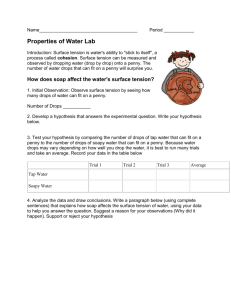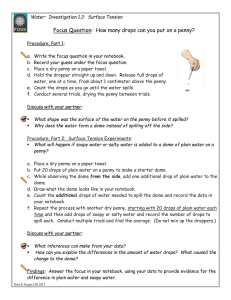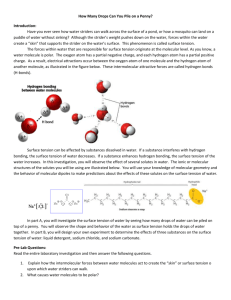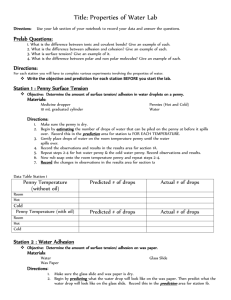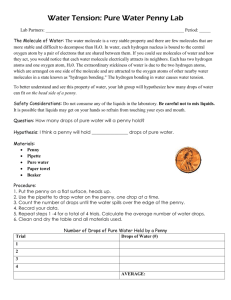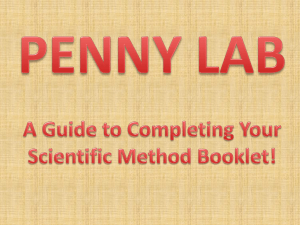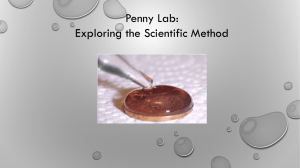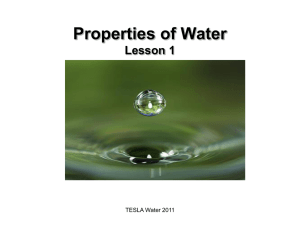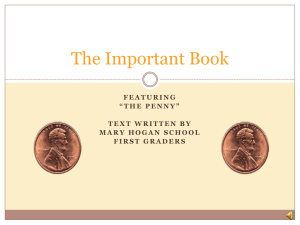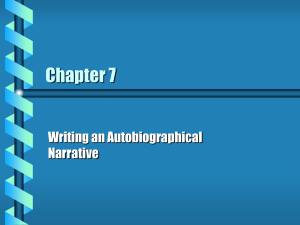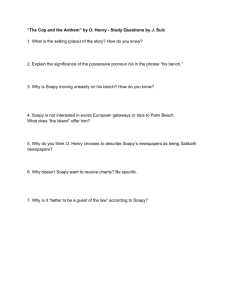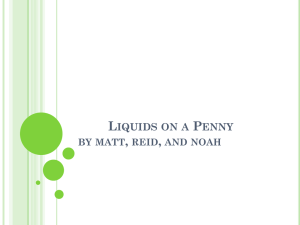STEM FAIR PROJECT
advertisement
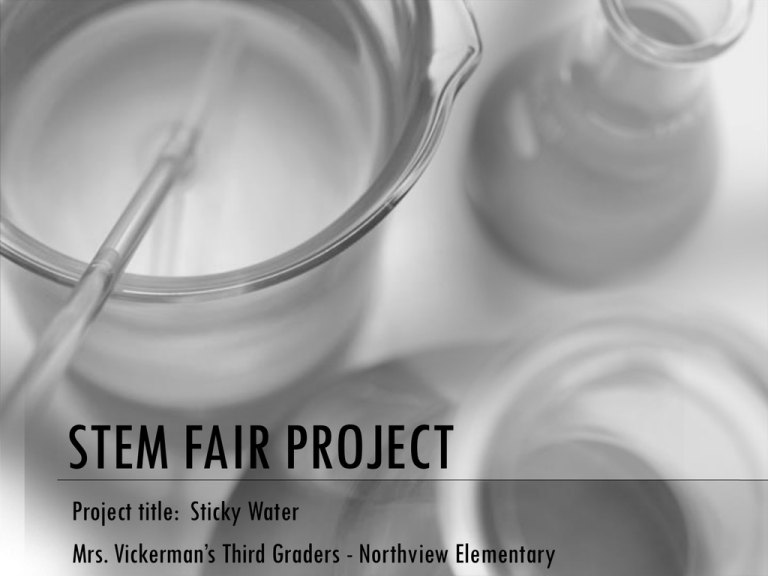
STEM FAIR PROJECT Project title: Sticky Water Mrs. Vickerman’s Third Graders - Northview Elementary STATEMENT OF THE PROBLEM • Does soap affect the surface tension of water? PROJECT OVERVIEW • Surface tension refers to water’s ability to “stick to itself “. Surface tension can be measured and observed by dropping water (drop by drop) on to a penny. We will observe and record how many drops of plain water and soapy water, will hold together on the penny before spilling off. The type of water with the greater number of drops will have more surface tension. RESEARCH • Surface tension is a force on the surface of a liquid that makes it like elastic. It is also called water skin. You can see surface tension at work when you see a drop of water. It creates a little “bead” of water like a dome. The water molecule is cohesive; it is very sticky. Water molecules would rather touch water molecules than air molecules, so they “hug” one another . This hugging pulls them together in a ball shape. Surface tension is responsible for the shape of liquid droplets you see on leaves and window panes. Because of surface tension, small insects such as the water strider can walk on water because their weight is not enough to penetrate the surface. We saw how a paper clip could “float” on the water due to surface tension and when we added a drop of soap the paper clip sank to the bottom. VARIABLES • Controlled variables: • 1. All groups used the same size and kind of eye droppers. • 2. All pennies were cleaned with vinegar prior to the experiment. • 3. All groups used the head side of the penny. • 4. Eyedroppers were all held one inch above the surface of the penny • Independent variable: • The trials were done with both tap water and soapy water • Dependent variable: Students explored whether they could put more drops of tap water on a penny or more drops of soapy water. The type of water that would hold together the best (have the most drops) would have the greater surface tension. HYPOTHESIS • We predict that the soapy water will have less surface tension than the plain tap water. MATERIALS • For each group: • 4 droppers • 4 small plastic cups • 1 tray • 1 penny • 1 ruler • 1 recording sheet • Plain tap water • Soapy water (5 ml liquid detergent/150 ml water) PROCEDURE • 1. Students break into 7 groups of 4 each. Each student is assigned a job: dropper, ruler holder, counter, recorder. • 2. The team leader cleans the penny with vinegar. • 3. Students take turns using the eyedropper to drop plain tap water on the penny and count how many drops it will hold until it spills over. One student holds the ruler so that the dropper can be kept at a distance of one inch from the penny. The recorder records the number of drops on the recording sheet. This step is repeated four times. Each student has a turn to do each job. • 4. Students use calculators to average the number of drops for their group. • 5. The groups report their findings and a class average is done. • 6. Steps 3- 6 are repeated using soapy water. DATA/OBSERVATIONS Average Number of tap water drops Average Number of soapy water drops Red Blue Yellow Green Purple Orange Gold Group 15 Group 30 Group 39 Group 27 Group 13 Group 17 Group 20 10 17 12 14 16 13 8 Class Average 23 13 CONCLUSION • The average number of drops of soapy water on the penny was less than the average number of drops of plain tap water. We conclude that soapy water does affect surface tension and causes it to have less surface tension. WORKS CITED • Education.com Website: http://www.education.com/activity/article/Water_Experiment_fifth/ • Educational toy factory website: http://www.educationaltoyfactory.com/surface_tension_experiment.h tm • Encyclopedia.Kids.net website: http://encyclopedia.kids.net.au/page/su/Surface_tension • Hann, Judith. How Science Works. London: Darling Kingsley Limited, 1991 • Wick, Walter. A Drop of Water: A Book of Science and Wonder. New York: Scholastic Press, 1997
